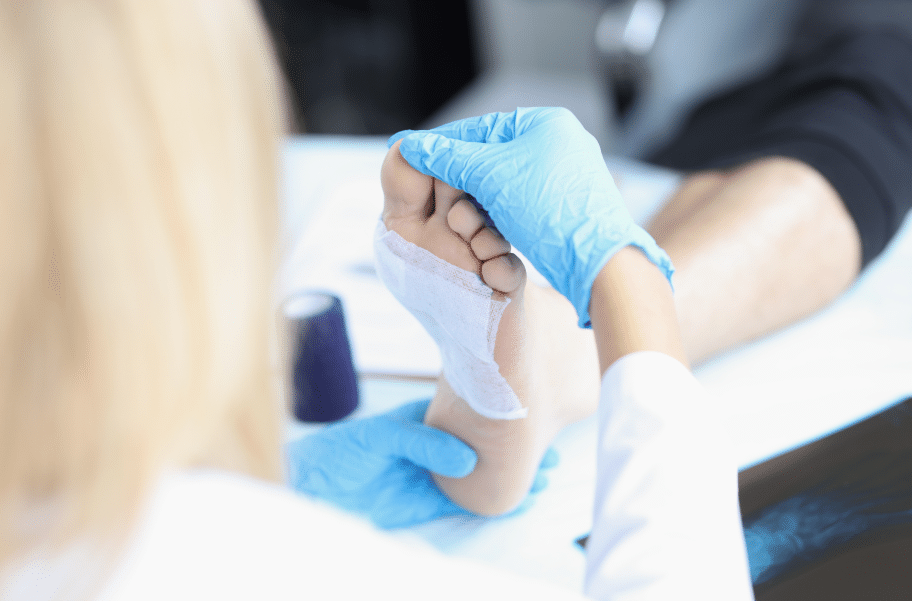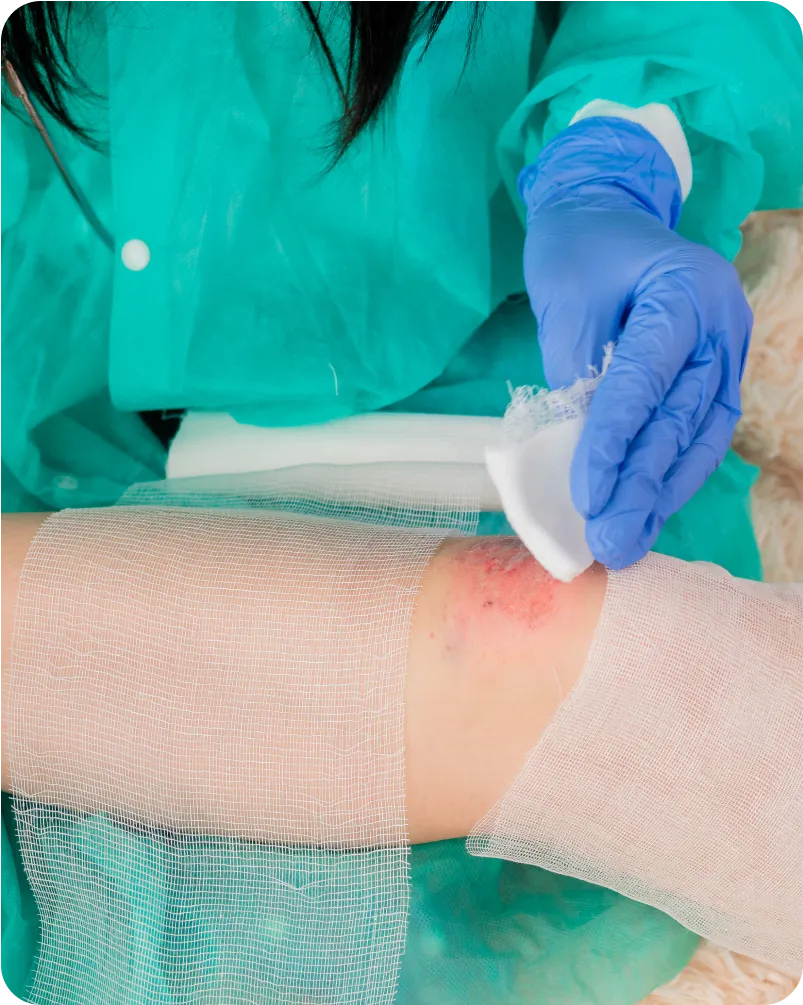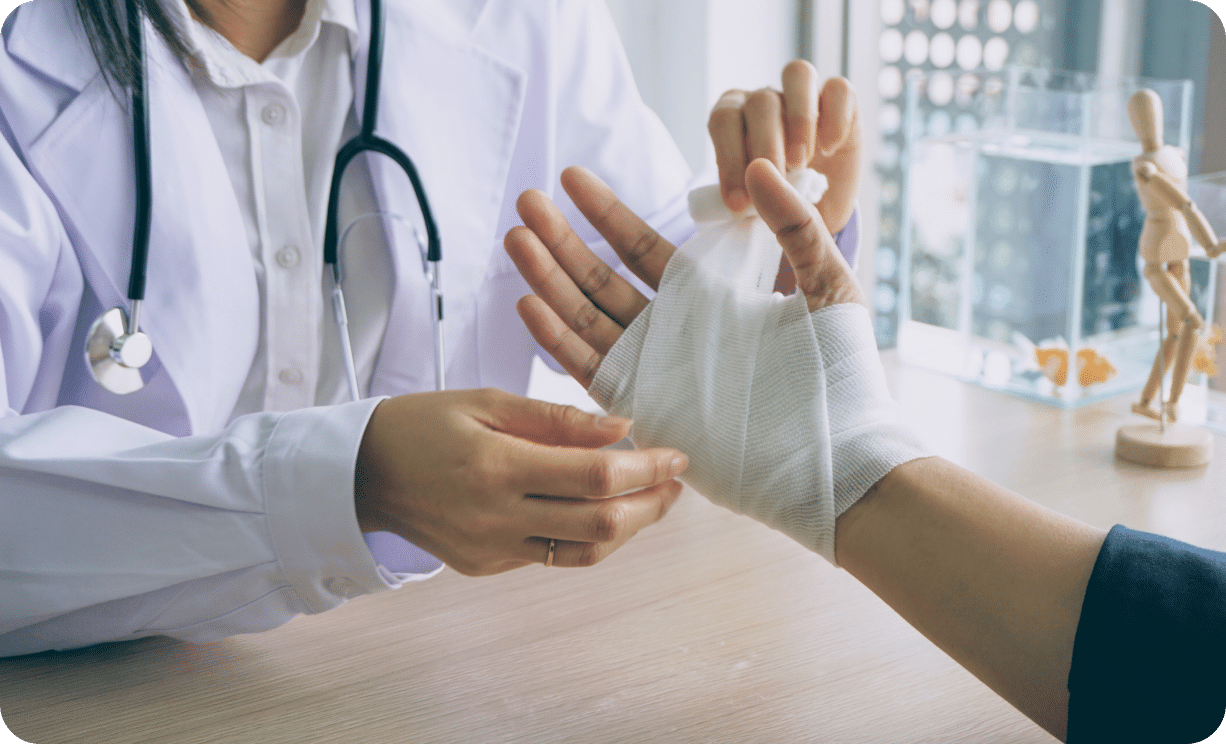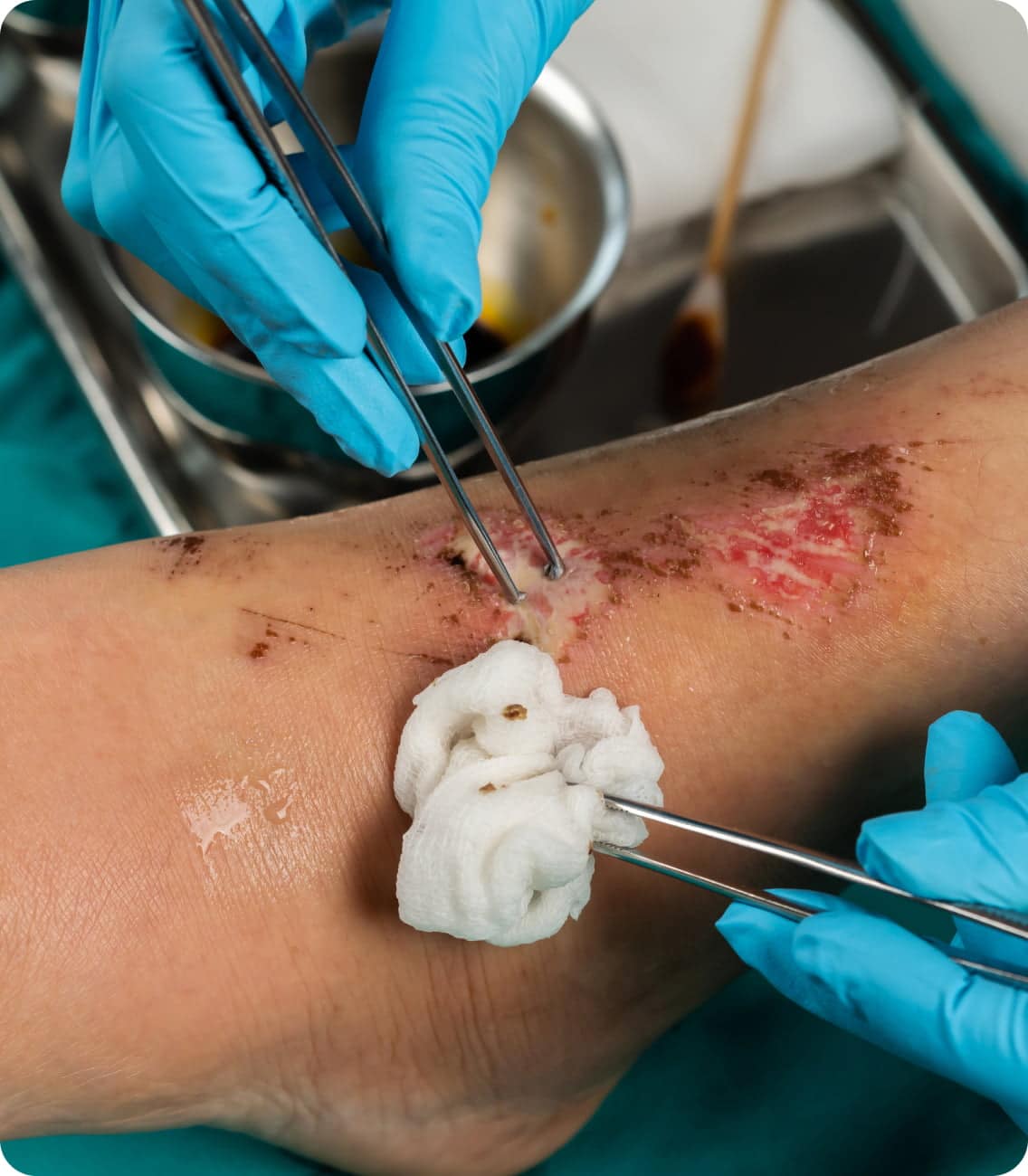
Puncture Wounds
Understanding Puncture Wounds and Their Treatment
What are Puncture Wounds?
Puncture wounds occur when a sharp object, such as a nail or needle, pierces the skin. These wounds may appear small on the surface but can extend deep into the tissues beneath. Due to the narrow entry point, puncture wounds are at a higher risk of infection and may require medical attention to clean and disinfect properly.
- Control Bleeding: Apply gentle pressure to the wound with a clean cloth or sterile gauze to control bleeding. Avoid removing any embedded objects, as they may be helping to control bleeding.
- Clean the Wound: Rinse the puncture wound thoroughly with clean water or a saline solution to remove dirt, debris, and bacteria. Use mild soap if available, but avoid scrubbing the wound, as it may cause further damage.
- Evaluate Depth and Location: Assess the depth and location of the puncture wound to determine if deeper structures such as tendons, muscles, nerves, or bones may be involved.
- Identify Foreign Bodies: If an object is embedded in the wound, do not attempt to remove it. Leave that to medical professionals to minimize the risk of further injury or bleeding.
- Manage Pain: Pain Relief: Over-the-counter or prescription pain medications may be recommended to alleviate discomfort associated with the puncture wound, particularly if it is deep or involves sensitive areas.
- Monitor for Signs of Infection: Keep an eye on the wound for any signs of infection, such as increased redness, swelling, warmth, or pus-like drainage. If you notice any of these symptoms, seek medical attention promptly for further evaluation and treatment.

When to Seek Medical Attention

Puncture wounds, particularly deep or contaminated ones, often require medical evaluation to assess the extent of injury, clean the wound thoroughly, and determine the need for further treatment. In some cases, diagnostic imaging such as X-rays may be necessary to evaluate for any foreign objects, fractures, or damage to underlying structures.
- Deep or Large Wounds: If the puncture wound is deep, large, or involves significant tissue damage, seek medical attention to assess the extent of the injury and determine the need for further treatment.
- Embedded Objects: If an object is embedded in the wound or cannot be easily removed, do not attempt to remove it yourself. Seek medical assistance to safely remove the object and assess for any underlying damage.
- Dirty or Contaminated Wounds: Puncture wounds that occur outdoors, in dirty environments, or involve contact with contaminated objects (such as rusty nails or animal bites) are at higher risk of infection. Seek medical attention for thorough wound cleaning and evaluation.
- Signs of Infection: If the puncture wound shows signs of infection, such as increased redness, warmth, swelling, or drainage of pus, seek medical attention promptly. Fever, chills, or other systemic symptoms may also indicate infection and require evaluation by a healthcare professional.
- Involvement of Sensitive Areas: Puncture wounds involving sensitive areas such as the face, eyes, hands, feet, or genitals may require specialized evaluation and treatment to prevent complications and preserve function.
- Underlying Medical Conditions: Individuals with compromised immune systems, diabetes, peripheral vascular disease, or other underlying medical conditions may be at higher risk of complications from puncture wounds and should seek medical attention promptly.
It’s essential to seek medical attention for puncture wounds that are deep, contaminated, involve embedded objects, show signs of infection, affect sensitive areas, or are associated with persistent pain or bleeding. Prompt evaluation and appropriate treatment can help prevent complications and promote optimal healing of puncture wounds.
Learn MoreOur Approach
Puncture Wounds Care
At MetaCure we prioritize the well-being and comfort of our patients. Our experienced team of healthcare professionals is dedicated to providing prompt, comprehensive, and compassionate care for lacerations of all types and severities.

Our Puncture Wounds Treatments
